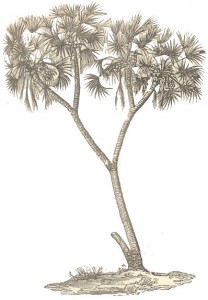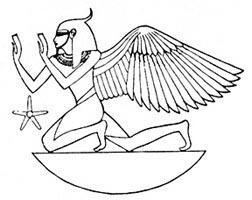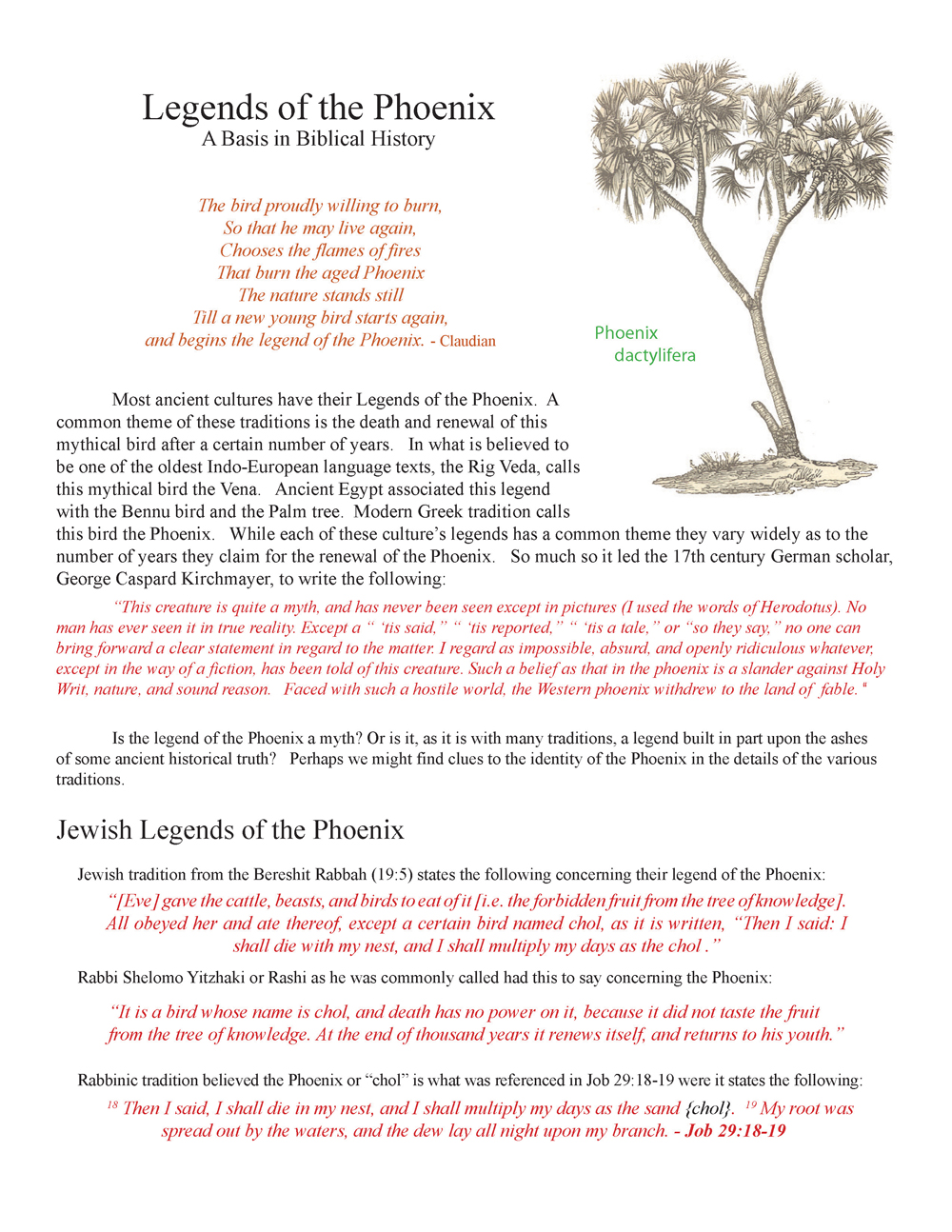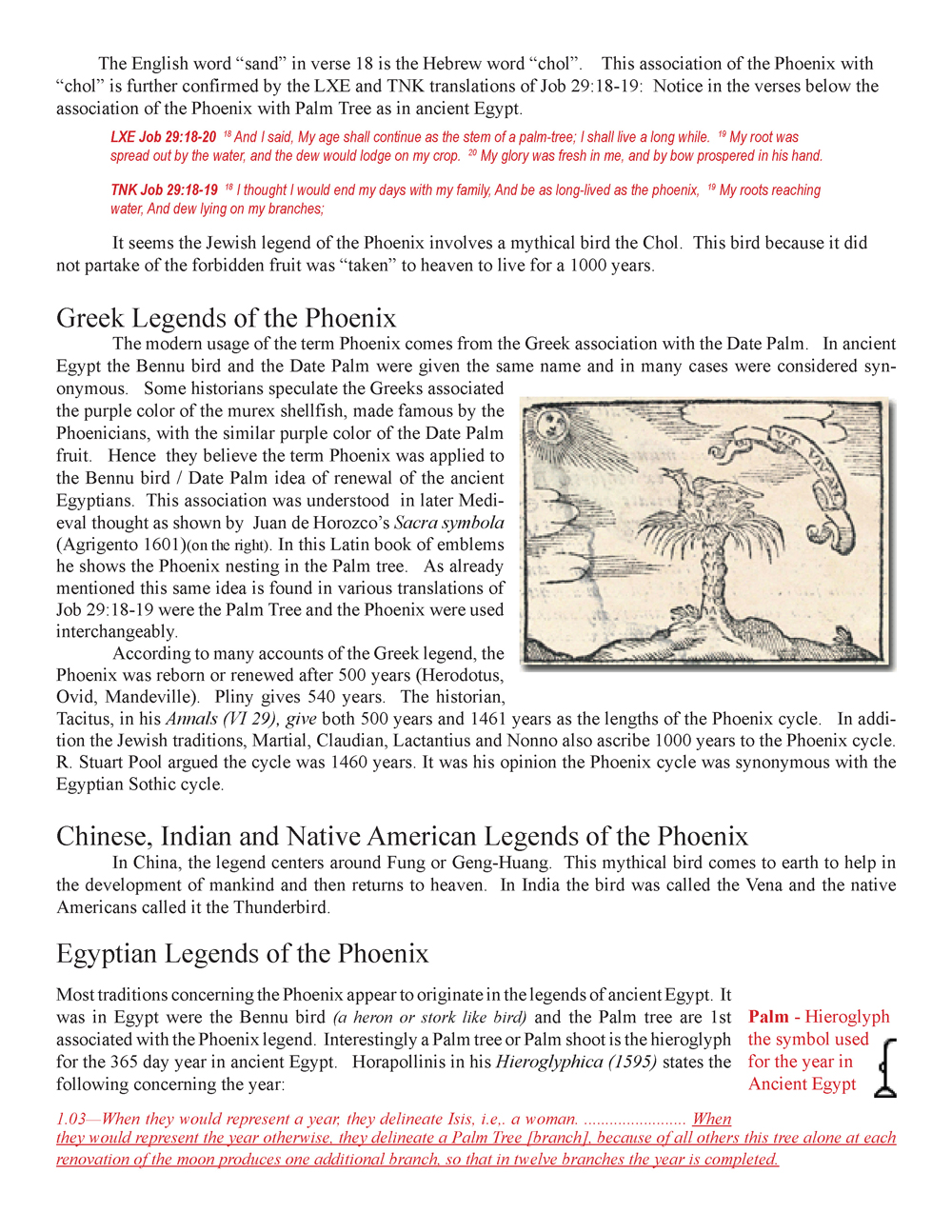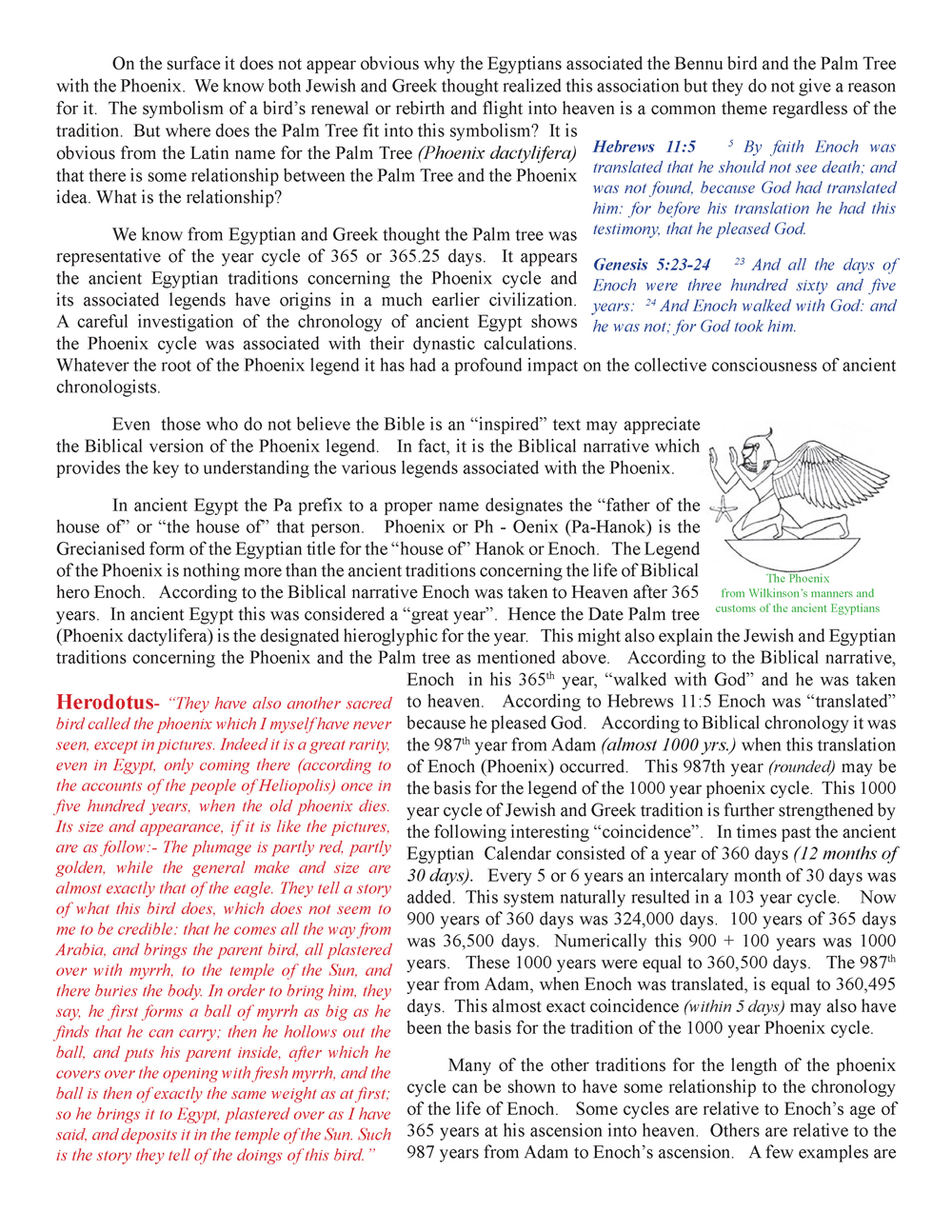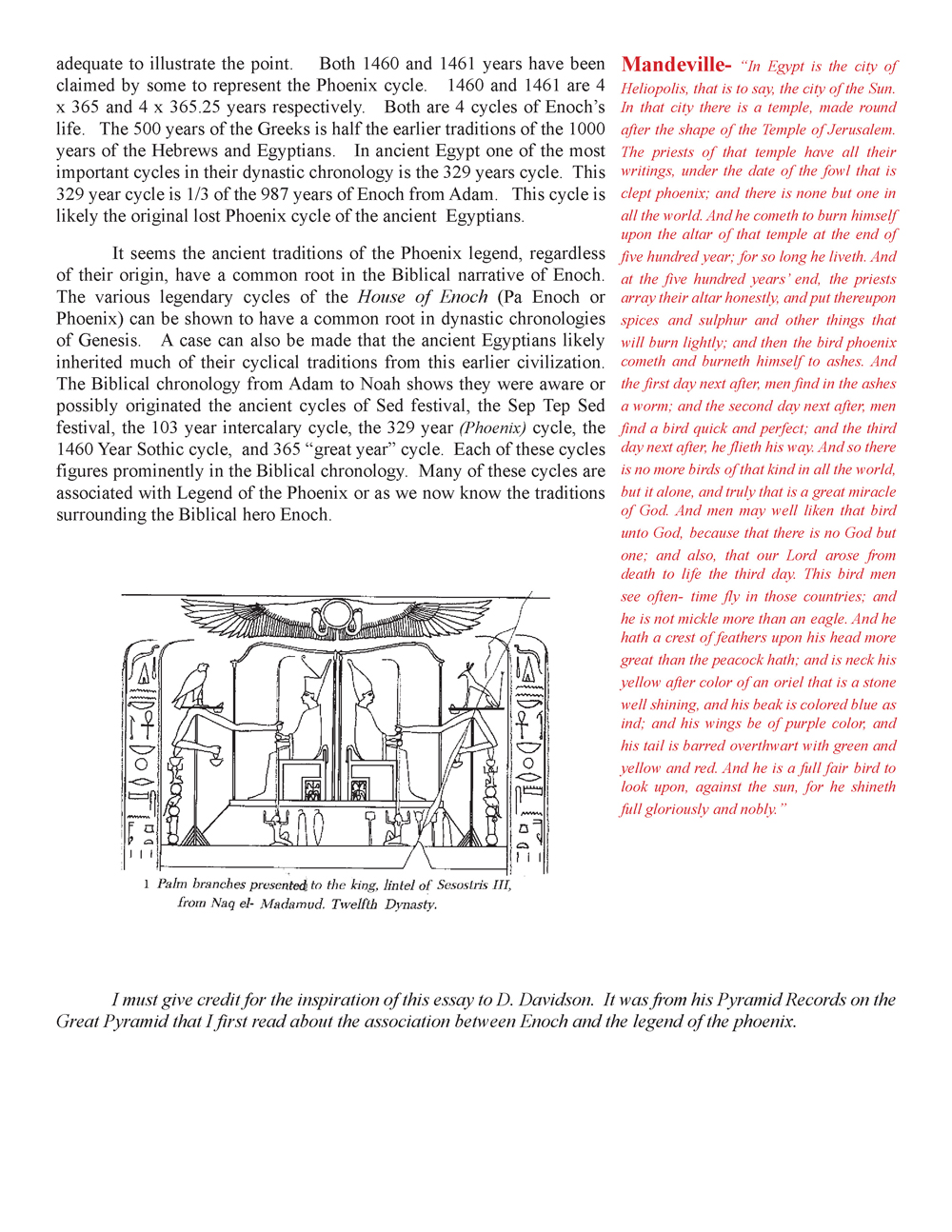A Basis in Biblical History
The bird proudly willing to burn,
So that he may live again,
Chooses the flames of fires
That burn the aged Phoenix
The nature stands still
Till a new young bird starts again,
and begins the legend of the Phoenix.
– Claudian
It’s fascinating to me that most ancient cultures have their Legends of the Phoenix. A common theme of these traditions is the death and renewal of this mythical bird after a certain number of years. In what is believed to be one of the oldest Indo-European language texts, the Rig Veda, it calls this mythical bird the Vena. Ancient Egypt associated this legend with the Bennu bird and the Palm tree. Modern Greek tradition calls this bird the Phoenix. While each of these culture’s legends has a common theme they vary widely as to the number of years they claim for the renewal of the Phoenix. So much so it led the 17th century German scholar, George Caspard Kirchmayer, to write the following:
“This creature is quite a myth, and has never been seen except in pictures (I used the words of Herodotus). No man has ever seen it in true reality. Except a “ ‘tis said,” “ ‘tis reported,” “ ‘tis a tale,” or “so they say,” no one can bring forward a clear statement in regard to the matter. I regard as impossible, absurd, and openly ridiculous whatever, except in the way of a fiction, has been told of this creature. Such a belief as that in the phoenix is a slander against Holy Writ, nature, and sound reason. Faced with such a hostile world, the Western phoenix withdrew to the land of fable.“
Is the legend of the Phoenix a myth? Or is it, as it is with many traditions, a legend built in part upon the ashes of some ancient historical truth? Perhaps we might find clues to the identity of the Phoenix in the details of some of these ancient traditions.
Jewish Legends of the Phoenix
Jewish tradition from the Bereshit Rabbah (19:5) states the following concerning their legend of the Phoenix:
“[Eve] gave the cattle, beasts, and birds to eat of it [i.e. the forbidden fruit from the tree of knowledge]. All obeyed her and ate thereof, except a certain bird named chol, as it is written, “Then I said: I shall die with my nest, and I shall multiply my days as the chol .”
Rabbi Shelomo Yitzhaki, or Rashi as he was commonly called, had this to say concerning the Phoenix:
“It is a bird whose name is chol, and death has no power on it, because it did not taste the fruit from the tree of knowledge. At the end of thousand years it renews itself, and returns to his youth.”
Rabbinic tradition believed the Phoenix or “chol” is what was referenced in Job 29:18-19 were it states the following:
Then I said, I shall die in my nest, and I shall multiply my days as the sand {chol}. My root was spread out by the waters, and the dew lay all night upon my branch. (Job 29:18-19)
The English word “sand” in verse 18 is the Hebrew word “chol”. This association of the Phoenix with “chol” is further confirmed by the LXE and TNK translations of Job 29:18-19: Notice in the verses below the association of the Phoenix with Palm Tree as in ancient Egypt.
And I said, My age shall continue as the stem of a palm-tree; I shall live a long while. My root was spread out by the water, and the dew would lodge on my crop. My glory was fresh in me, and by bow prospered in his hand. (LXE Job 29:18-20)
I thought I would end my days with my family, And be as long-lived as the phoenix, My roots reaching water, And dew lying on my branches; (TNK Job 29:18-19 18)
It seems the Jewish legend of the Phoenix involves a mythical bird the Chol. This bird because it did not partake of the forbidden fruit was “taken” to heaven to live for a 1000 years.
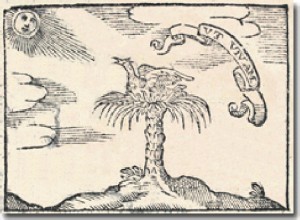 Greek Legends of the Phoenix
Greek Legends of the Phoenix
The modern usage of the term Phoenix comes from the Greek association with the Date Palm. In ancient Egypt the Bennu bird and the Date Palm were given the same name and in many cases were considered synonymous. Some historians speculate the Greeks associated the purple color of the murex shellfish, made famous by the Phoenicians, with the similar purple color of the Date Palm fruit. Hence they believe the term Phoenix was applied to the Bennu bird / Date Palm idea of renewal found in ancient Egyptian traditions. This association was understood in later Medieval thought as shown by Juan de Horozco’s Sacra symbola (Agrigento 1601)(on the right). In this Latin book of emblems he shows the Phoenix nesting in the Palm tree. As already mentioned this same idea is found in various translations of Job 29:18-19 were the Palm Tree and the Phoenix were used interchangeably.
According to many accounts of the Greek legend, the Phoenix was reborn or renewed after 500 years (Herodotus, Ovid, Mandeville). Pliny gives 540 years. The historian, Tacitus, in his Annals (VI 29), give both 500 years and 1461 years as the lengths of the Phoenix cycle. In addition the Jewish traditions, Martial, Claudian, Lactantius and Nonno ascribe 1000 years to the Phoenix cycle. Stuart Pool argued the cycle was 1460 years. It was his opinion the Phoenix cycle was synonymous with the Egyptian Sothic cycle.
Chinese, Indian and Native American Legends of the Phoenix
In China, the legend centers around Fung or Geng-Huang. This mythical bird comes to earth to help in the development of mankind and then returns to heaven. In India the bird was called the Vena and the native Americans called it the Thunderbird.
Egyptian Legends of the Phoenix
Most traditions concerning the Phoenix appear to originate in the legends of ancient Egypt. It was in Egypt were the Bennu bird (a heron or stork like bird) and the Palm tree are first associated with the Phoenix legend. Interestingly a Palm tree or Palm shoot is the hieroglyph symbol used for the 365 day year in ancient Egypt.
Palm – Hieroglyph
the symbol used for the year in ancient Egypt
Horapollinis in his Hieroglyphica (1595) states the following concerning the year:
When they would represent a year, they delineate Isis, i.e,. a woman. …………………… When they would represent the year otherwise, they delineate a Palm Tree [branch], because of all others this tree alone at each renovation of the moon produces one additional branch, so that in twelve branches the year is completed.
On the surface it does not appear obvious why the Egyptians associated the Bennu bird and the Palm Tree with the Phoenix. We know both Jewish and Greek thought realized this association but they do not give a reason for it. The symbolism of a bird’s renewal or rebirth and flight into heaven is a common theme regardless of the tradition. But where does the Palm Tree fit into this symbolism? It is obvious from the Latin name for the Palm Tree (Phoenix dactylifera) that there is some relationship between the Palm Tree and the Phoenix idea. What is the relationship?
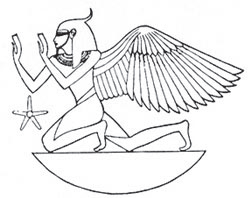 We know from Egyptian and Greek thought the Palm tree was representative of the year cycle of 365 or 365.25 days. It appears the ancient Egyptian traditions concerning the Phoenix cycle and its associated legends though have origins in a much earlier civilization. A careful investigation of the chronology of ancient Egypt shows the Phoenix cycle was associated with their dynastic calculations. Whatever the root of the Phoenix legend it has had a profound impact on the collective consciousness of those ancient chronologists.
We know from Egyptian and Greek thought the Palm tree was representative of the year cycle of 365 or 365.25 days. It appears the ancient Egyptian traditions concerning the Phoenix cycle and its associated legends though have origins in a much earlier civilization. A careful investigation of the chronology of ancient Egypt shows the Phoenix cycle was associated with their dynastic calculations. Whatever the root of the Phoenix legend it has had a profound impact on the collective consciousness of those ancient chronologists.
Biblical Legends of the Phoenix
Even those who do not share my believe that the Bible is an inspired text may appreciate the Biblical version of the Phoenix legend. In fact, it is the Biblical narrative which provides the key to understanding the various legends associated with the Phoenix.
By faith Enoch was translated that he should not see death; and was not found, because God had translated him: for before his translation he had this testimony, that he pleased God. (Hebrews 11:5)
And all the days of Enoch were three hundred sixty and five years: And Enoch walked with God: and he was not; for God took him. (Genesis 5:23-24)
In ancient Egypt the Pa prefix to a proper name designates the “father of the house of” or “the house of” that person. Phoenix or Ph – Oenix (Pa-Hanok) is the Grecianised form of the Egyptian title for the “house of” Hanok or Enoch. The Legend of the Phoenix is nothing more than the ancient traditions concerning the life of Biblical hero Enoch.
According to the Biblical narrative Enoch was taken to Heaven after 365 years. In ancient Egypt this was considered a “great year”. Hence the Date Palm tree (Phoenix dactylifera) hieroglyphic was used to represent the year. This might also explain the Jewish and Egyptian traditions concerning the Phoenix and the Palm tree as mentioned above. According to the Biblical narrative, Enoch in his 365th year, “walked with God” and he was taken heaven. According to Hebrews 11:5 Enoch was “translated” because he pleased God. According to Biblical chronology it was the 987th year from Adam (almost 1000 yrs.) when this translation of Enoch (Phoenix) occurred. This 987th year (rounded) may be the basis for the legend of the 1000 year phoenix cycle.
Herodotus:
“They have also another sacred bird called the phoenix which I myself have never seen, except in pictures. Indeed it is a great rarity, even in Egypt, only coming there (according to the accounts of the people of Heliopolis) once in five hundred years, when the old phoenix dies. Its sixe and appearance, if it is like the pictures, are as follows: The plumage is partly red, partly golden, while the general make and size are almost exactly that of the eagle. They tell a story of what this bird does, which does not seem to me to be credible, that he comes all the way from Arabia, and brings the parent bird, all plastered over with myrrh, to the temple of the Sun, and there buries the body. In order to bring him, they say, he first forms a ball of myrrh as big as he finds that he can carry; then he hollows out the ball, and puts his parent inside, after which he covers over the opening with fresh myrrh, and the ball is then of exactly the same weight as at first; so he brings it to Egypt, plastered over as I have said, and deposits it in the temple of the Sun. Such is the story they tell of the doings of this bird.”
Many of the other traditions for the length of the phoenix cycle can be shown to have some relationship to the chronology of the life of Enoch. Some cycles are relative to Enoch’s age of 365 years at his ascension into heaven. Others are relative to the 987 years from Adam to Enoch’s ascension. A few examples are adequate to illustrate the point. Both 1460 and 1461 years have been claimed by some to represent the Phoenix cycle. 1460 and 1461 are 4×365 and 4×365.25 years respectively. Both are 4 cycles of Enoch’s life. The 500 years of the Greeks is half the earlier traditions of the 1000 years of the Hebrews and Egyptians. In ancient Egypt one of the most important cycles is their dynastic chronology is the 329 year cycle. This 329 years cycle is 1/3 of the 987 years the Bibles gives from Adam to Enoch. This cycle is likely the original lost Phoenix cycle of the ancient Egyptians.
It seems the ancient traditions of the Phoenix legend, regardless of their origin, have a common root in the Biblical narrative of Enoch. The various legendary cycles of the House of Enoch (Pa Enoch or Phoenix) can be shown to have a common root in dynastic chronologies of Genesis. A case can also be made that the ancient Egyptians likely inherited much of their cyclical traditions from this earlier civilization. The Biblical chronology from Adam to Noah shows they were aware or possibly originated the ancient cycles of Sed festival, the Sep Tep Sed festival, the 103 year intercalary cycle, the 329 year (Phoenix) cycle, the 1460 Year Sothic cycle, and 365 “great year” cycle. Each of these cycles figures prominently in the Biblical chronology. Many of them are associated with Legend of the Phoenix or as we now know the traditions surrounding the Biblical hero Enoch.
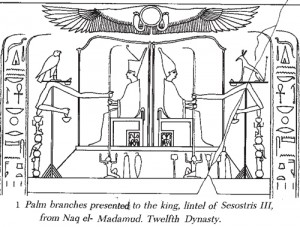 Mandeville – “In Egypt is the city of Heliopolis, that is to say, the city of the Sun. In that city there is a temple, made round after the shape of the Temple of Jerusalem. The priests of that temple have all their writings, under the date of the fowl that is clept phoenix; and there is none but one in all the world. And he cometh to burn himself upon the altar of that temple at the end of five hundred year; for so long he liveth. And at the five hundred years’ end, the priests array their altar honestly, and put thereupon spices and sulphur and other things that will burn lightly; and then the bird phoenix cometh and burneth himself to ashes. And the first day next after, men find in the ashes a worm; and the second day next after, men find a bird quick and perfect; and the third day next after, he flieth his way. And so there is no more birds of that kind in all the world, but it alone, and truly that is a great miracle of God. And men may well liken that bird unto God, because that there is no God but one; and also, that our Lord arose from death to life the third day. This bird men see often-time fly in those countries; and he is not mickle more than an eagle. And he hath a crest of feathers upon his head more great than the peacock hath; and is neck his yellow after color of an oriel that is a stone well shining, and his beak is colored blue as ind; and his wings be of purple color, and his tail is barred overthwart with green and yellow and red. And he is a full fair bird to look upon, against the sun, for he shineth full gloriously and nobly.”
Mandeville – “In Egypt is the city of Heliopolis, that is to say, the city of the Sun. In that city there is a temple, made round after the shape of the Temple of Jerusalem. The priests of that temple have all their writings, under the date of the fowl that is clept phoenix; and there is none but one in all the world. And he cometh to burn himself upon the altar of that temple at the end of five hundred year; for so long he liveth. And at the five hundred years’ end, the priests array their altar honestly, and put thereupon spices and sulphur and other things that will burn lightly; and then the bird phoenix cometh and burneth himself to ashes. And the first day next after, men find in the ashes a worm; and the second day next after, men find a bird quick and perfect; and the third day next after, he flieth his way. And so there is no more birds of that kind in all the world, but it alone, and truly that is a great miracle of God. And men may well liken that bird unto God, because that there is no God but one; and also, that our Lord arose from death to life the third day. This bird men see often-time fly in those countries; and he is not mickle more than an eagle. And he hath a crest of feathers upon his head more great than the peacock hath; and is neck his yellow after color of an oriel that is a stone well shining, and his beak is colored blue as ind; and his wings be of purple color, and his tail is barred overthwart with green and yellow and red. And he is a full fair bird to look upon, against the sun, for he shineth full gloriously and nobly.”
Please note that credit for many of the ideas for this essay must be given to D. Davidson. and C. Aldersmith. It was from their Pyramid Records in The Great Pyramid: It’s Divine Message that I first read about the association between Enoch and the legends of the phoenix.

